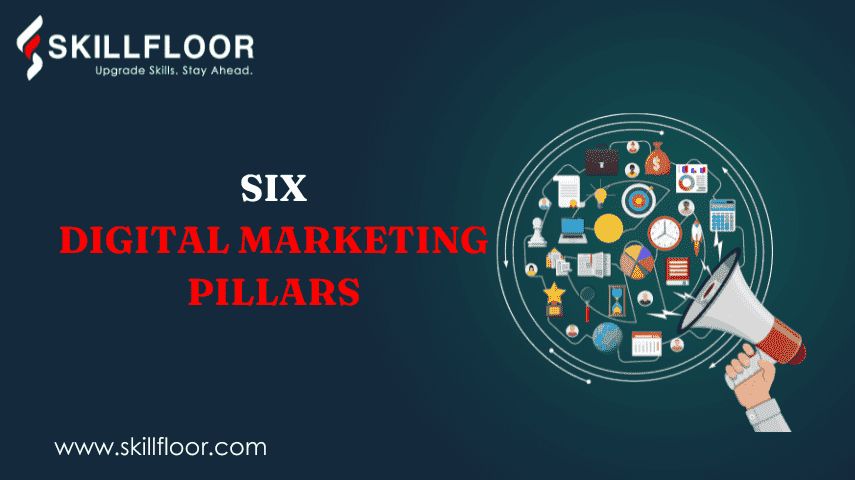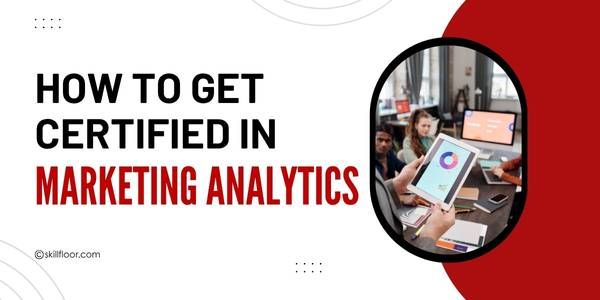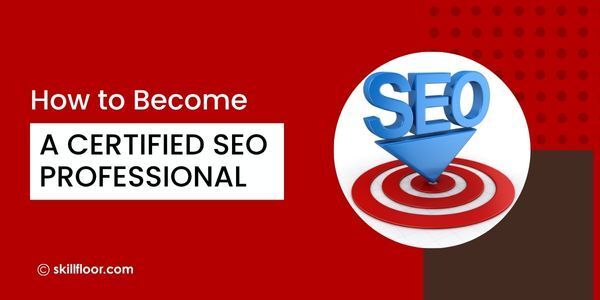How Many Main Pillars of Digital Marketing
The six main pillars of digital marketing, including SEO, content marketing, social media, PPC, email marketing, and analytics. Learn how each supports your overall marketing strategy

Have you ever wondered why online advertising is now so crucial to the success of your business? It might be intimidating to pick from so many different platforms and techniques. You may streamline the process and efficiently increase your online presence by concentrating on the Main Pillars of Digital Marketing, such as social media, SEO, and content marketing.
What is Digital Marketing?
Digital marketing is the process of advertising your company online via a variety of techniques such as search engine optimization, social media marketing, email marketing, and content marketing to expand your clientele, build your brand, and expand your company.
Importance of Digital Marketing
-
Wider Audience Reach: Compared to traditional marketing strategies, digital marketing enables you to interact with a worldwide audience and reach a larger audience.
-
Cost-Effective: Compared to traditional forms of advertising like TV or print commercials, it provides more cost-effective ways to market your company.
-
Targeted Marketing: Your marketing campaigns may be customized to target particular audiences according to their online habits, interests, and demographics.
-
Measurable Results: With the use of digital marketing tools, you can monitor campaign effectiveness and make data-driven decisions to improve your efforts.
-
Builds Brand Loyalty: Maintaining a steady online presence on social media and in email marketing helps fortify your connections with clients and foster enduring loyalty.
How many main pillars of digital marketing are there?
There are 6 main pillars of digital marketing, which include:
-
SEO (Search Engine Optimization)
-
Content Marketing
-
Social Media Marketing
-
Pay-Per-Click (PPC) Advertising
-
Email Marketing
-
Analytics and Data-Driven Marketing
1. Search Engine Optimization (SEO)
SEO, or Search Engine Optimization, is the process of optimizing your website to rank higher on search engines like Google. To make your website more apparent to customers looking for goods or services linked to your business, it entails employing keywords, enhancing the structure of your website, and producing high-quality content. Using no paid advertising, SEO aids in bringing in organic visitors.
How Does SEO Help Your Business?
SEO helps your business by improving your website's visibility on search engines and attracting more organic traffic from potential customers searching for products or services like yours. It builds trust and credibility, enhances user experience, and increases your chances of converting visitors into paying customers, all without relying solely on paid advertising. SEO also supports long-term business growth.
Steps to Improve Your SEO:
-
Research Keywords: To increase your website's exposure on search engines, choose the keywords that your target audience uses most frequently and organically integrate them into the content.
-
Optimize Website Structure: Make sure your website is responsive to mobile devices, loads rapidly, and is easy to use for both search engines and users.
-
Create Quality Content: Provide informative, interesting, and timely information on a regular basis to satisfy the needs of your audience and encourage them to return for more.
-
Build Backlinks: Encourage trustworthy websites to return links to your website, since this will increase the authority and search engine rankings of your website.
-
Regularly Update Content: Maintaining current and new content can help you fulfill the demands of your audience over time and remain relevant in search engine results.
2. Content Marketing
Content Marketing is the strategy of creating and sharing valuable, relevant, and consistent content to attract and engage your target audience. This could include blog posts, videos, infographics, and more. The goal is to build trust, educate your audience, and drive profitable customer actions without directly promoting a product.
How Does Content Marketing Help Your Business?
Content marketing benefits your company by fostering interaction, generating leads, and establishing authority and trust with your audience. In addition to generating more leads and improving customer loyalty, you can raise brand recognition and provide useful information that addresses the requirements and queries of your target audience by concentrating on producing good content as one of the Main Pillars of Digital Marketing.
Types of Content You Can Create:
-
Blog Posts: Articles that provide relevant, keyword-rich material to educate your readers and enhance the search engine optimization of your website.
-
Videos: Captivating visual material with the ability to inform, amuse, or visually represent items to your audience.
-
Infographics: Visually appealing images that make complicated information simple to understand and distribute on a variety of devices.
-
Podcasts: Audio content that allows you to interact with your listeners while delivering information on the move.
-
Social Media Posts: Updates that are brief yet compelling that boost engagement and brand recognition on social media sites like Facebook, Instagram, and Twitter.
Steps to Start with Content Marketing:
-
Identify Your Audience: Recognize your target audience, what attracts them, and what kind of material will keep them interested.
-
Set Clear Goals: Decide what you want to accomplish with your content, be it raising brand recognition, generating leads, or growing traffic.
-
Create a Content Calendar: To maintain organization and consistency, plan your content ahead of time and stick to a regular posting schedule across several channels.
-
Produce High-Quality Content: It is important to concentrate on producing unique, educational, and captivating content that inspires readers to act by offering genuine value.
-
Measure and Adjust: Utilize analytics like traffic and interaction to monitor the effectiveness of your material, and then modify your approach according to what your audience responds to most well.
3. Social Media Marketing
Social Media Marketing is the practice of using platforms like Facebook, Instagram, Twitter, and LinkedIn to promote your business. Raise brand recognition, improving traffic, and cultivating connections, entails providing content, interacting with your audience, and running advertisements. Businesses may establish more direct and engaging connections with their target audience through social media marketing.
How Does Social Media Marketing Help Your Business?
Social media marketing helps your company by increasing website traffic, cultivating consumer involvement, and brand awareness. Building communities, cultivating connections with customers, and producing customized advertisements to appeal to particular demographics are all possible with it as one of the Main Pillars of Digital Marketing, and doing so will boost conversions and foster enduring client loyalty.
Steps to Get Started with Social Media Marketing:
-
Choose the Right Platforms: Pay attention to the social media sites that, depending on your industry, your target market frequents, including Facebook, Instagram, LinkedIn, or TikTok.
-
Create Engaging Content: Share inspiring, instructive, or entertaining material with your audience that speaks to them. In order to maintain interest, vary the formats—such as blogs, articles, and videos.
-
Engage with Your Audience: Build relationships and create a feeling of community around your business by answering questions, leaving comments, and participating in conversations.
-
Consistently Post: Create a publishing schedule to maintain awareness and interest in your brand. Maintaining momentum and keeping your audience interested requires regular participation.
-
Analyze Your Performance: Utilize social media analytics to monitor the most effective material and modify your plan in response to the content that generates the most response and outcomes.

4. Pay-Per-Click (PPC) Advertising
PPC (Pay-Per-Click) Advertising is a digital marketing strategy where businesses pay each time someone clicks on their online ad. These advertisements could show up on websites like Facebook, Instagram, and Google. With PPC, you can efficiently manage your advertising budget, target particular consumers, and obtain instant visibility.
How Does PPC Help Your Business?
PPC benefits your company by enhancing brand awareness, bringing in fresh leads, and delivering instant traffic to your website. PPC, one of the Main Pillars of Digital Marketing, enables precision targeting so that your advertising is seen by the appropriate people at the right moment. This may lead to higher conversion rates and a better return on investment.
Types of PPC Ads:
-
Search Ads: Show up at the top of search engine results pages for relevant terms entered by users.
-
Display Ads: Visual advertisements that reach a wider audience by appearing on websites that are part of Google's Display Network.
-
Social Media Ads: Advertisements that are specifically tailored to a user's interests and activity on social media sites like Facebook, Instagram, and LinkedIn.
-
Shopping Ads: Search engine results page advertisements that are centered on products and are usually employed by online retailers.
-
Video Ads: Advertisements that run before or during video content on websites like YouTube in an effort to visually grab viewers' attention.
Steps to Start with PPC:
-
Set a Clear Budget: Establish a daily or monthly budget to help you stay within your means while you evaluate the effectiveness of your advertisements.
-
Choose Your Platforms: If you want to reach your target audience where they are most active, choose Google, Facebook, or Instagram as your platform.
-
Target the Right Audience: Make sure the individuals who are most likely to convert to your advertising see them by defining your audience according to their demographics, interests, and actions.
-
Create Compelling Ads: To boost clicks and conversions, craft ad language that is concise, compelling, and includes strong calls to action and visually striking imagery.
-
Track and Optimize: Make sure you're optimizing your return on investment by keeping a close eye on your ads' performance and making necessary tweaks to increase click-through rates.
5. Email Marketing
Businesses use email marketing as a digital technique to deliver updates, bulletins, and promotional messages straight to the inboxes of their subscribers. An email campaign's objectives are to build rapport, offer insightful content, and persuade recipients to do particular actions, such as buying a product or signing up for a service. Email marketing is still one of the most efficient and individualized methods of consumer interaction.
How Does Email Marketing Help Your Business?
Email marketing improves your company by strengthening client connections and keeping your brand at the forefront of consumers' minds. You may deliver customized messages to your audience, increasing conversions and audience engagement. Email marketing, one of the Main Pillars of Digital Marketing, may boost client loyalty, increase sales, and improve customer retention by sending insightful material straight to their inboxes.
Types of Email Marketing Campaigns:
-
Newsletters: Frequently scheduled updates that notify your audience of your most recent news, deals, and material.
-
Promotional Emails: Focused on driving sales with special offers, discounts, or limited-time deals.
-
Welcome Emails: A friendly introduction sent to new subscribers, introducing your brand and setting expectations.
-
Abandoned Cart Emails: Users who put things in their shopping carts but didn't finish the transaction receive reminders.
-
Re-engagement Emails: Designed to re-connect with inactive subscribers and encourage them to re-engage with your brand.
Steps to Start with Email Marketing:
-
Build Your Email List: By providing incentives like discounts or access to unique material, you may entice users of your website, followers on social media, and customers to fill out forms.
-
Choose an Email Platform: To manage your list, design campaigns, and monitor results, choose an email marketing platform that is easy to use, such as Mailchimp or Constant Contact.
-
Segment Your Audience: To send more relevant and targeted emails, segment your email list into smaller groups according to demographics, habits, or interests.
-
Create Valuable Content: Provide informative articles, special deals, or updates about your company in emails that are interesting, informative, and valuable to your readers.
-
Test and Optimize: Monitor the open rate and click through rates of your emails, and experiment with subject lines, content, and send timings on a regular basis to enhance performance.
6. Analytics and Data-Driven Marketing
The term "analytics" in digital marketing describes the gathering, evaluating, and interpreting of data from different online marketing initiatives. Metrics including email performance, social media engagement, website traffic, and conversions are tracked in this process. Understanding the effectiveness of your marketing initiatives and using data-driven insights to refine next campaigns and boost outcomes are the main objectives.
How Do Analytics Help Your Business?
Analytics enhance your company by offering insightful data on consumer behavior, ROI, and the efficacy of campaigns. Analytics is one of the Main Pillars of Digital Marketing because it helps you manage resources more effectively, make data-driven choices, and modify tactics. Better targeting, more engagement, and enhanced performance follow, all of which contribute to the expansion and success of the company.
Key Metrics to Track:
-
Website Traffic: Keep track of who visits your website, where they come from, and what pages they look at most often.
-
Conversion Rate: Keep track of the percentage of visitors who finish desired tasks, such as purchasing something, registering, or completing a form.
-
Bounce Rate: Calculate the proportion of visitors that abandon your website after just seeing one page to identify any possible problems with user engagement.
-
Click-Through Rate (CTR): Check the number of individuals that click on your links, emails, or advertisements to gauge the success of your calls to action and messaging.
-
Customer Lifetime Value (CLV): Comprehend the revenue generated by each customer during their association with your enterprise to facilitate long-term growth optimization.
Steps to Use Analytics Effectively:
-
Set Clear Goals: Establish your goals, such as raising sales, enhancing engagement, or growing traffic, so that you can compare your metrics to predetermined targets.
-
Choose the Right Tools: Make sure you have the appropriate tools for monitoring important indicators by gathering data using analytics systems like Google Analytics or social media insights.
-
Regularly Review Data: Develop the practice of regularly reviewing your statistics to find areas that want improvement and uncover trends that can help you stay on course with your goal.
-
Focus on Actionable Insights: Focus on the insights that will directly affect your goals and help you make better business decisions, rather than becoming bogged down in the data.
-
Adjust and Optimize: Make sure you are constantly receiving the greatest results by making adjustments to your campaigns depending on the data you get.
Developing a strong internet presence doesn't have to be difficult. You may develop a well-balanced strategy that spurs growth by concentrating on the Main Pillars of Digital Marketing, which include SEO, content marketing, social media, and email marketing. Every pillar is essential to engaging your audience, boosting exposure, and cultivating a devoted clientele. Maintaining consistency, tracking your progress, and making necessary adjustments are crucial. You can create a solid digital marketing plan that helps your company succeed in the long run by starting small and building on your progress using data-driven decision-making.




























































